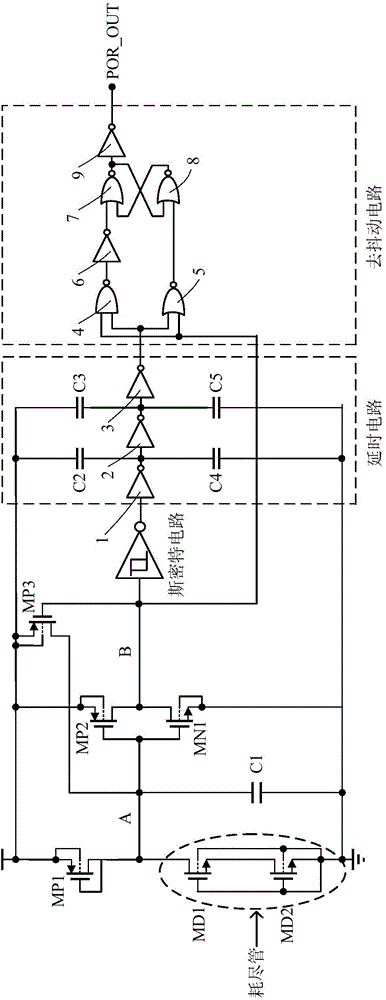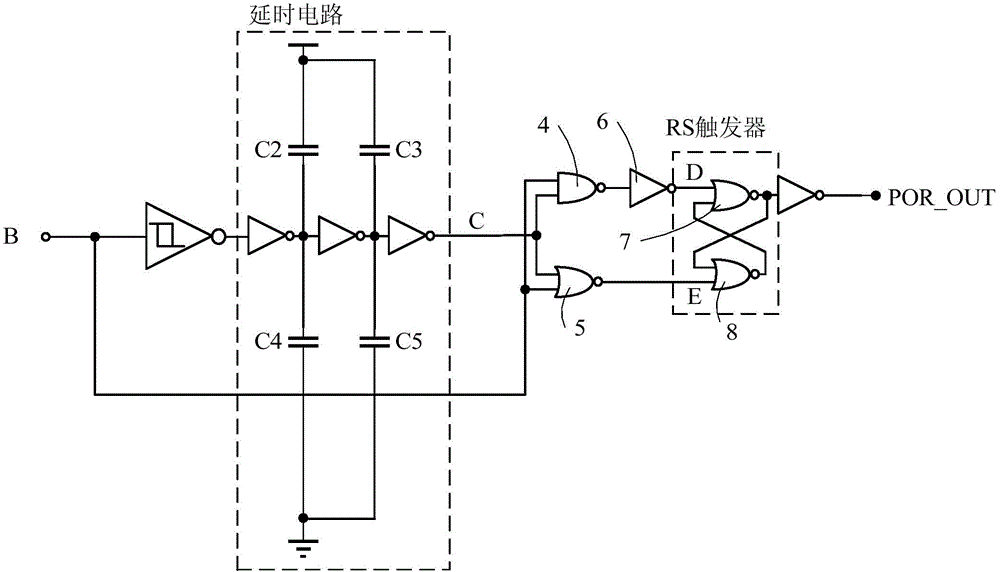Low-power consumption power-on reset circuit
A technology of electric reset and low power consumption, which is applied in the field of low power power-on reset circuit, can solve the problems of reset signal generation, low power consumption, static power consumption, etc., and achieve the effect of strong anti-interference ability and low power consumption
- Summary
- Abstract
- Description
- Claims
- Application Information
AI Technical Summary
Problems solved by technology
Method used
Image
Examples
Embodiment Construction
[0026] The structure and working principle of the low-power power-on reset circuit of the present invention will be described in detail below in conjunction with the accompanying drawings. Such as figure 1 As shown, in this embodiment, the power-on reset circuit includes a power-on reset signal generation circuit, a Schmidt circuit, a delay circuit and a debounce circuit that are connected to each other.
[0027] Specifically, the power-on reset signal generation circuit includes two branches connected in parallel, the first branch includes a first PMOS transistor MP1, its source is connected to the power supply, the gate is short-circuited to the drain, and the drain is connected to the first power consumption The drain of the depletion-type NMOS transistor MD1 is connected, the source of the first depletion-type NMOS transistor MD1 is connected to the drain of the second depletion-type NMOS transistor MD2, and the source of the second depletion-type NMOS transistor MD2 is gr...
PUM
 Login to View More
Login to View More Abstract
Description
Claims
Application Information
 Login to View More
Login to View More - R&D
- Intellectual Property
- Life Sciences
- Materials
- Tech Scout
- Unparalleled Data Quality
- Higher Quality Content
- 60% Fewer Hallucinations
Browse by: Latest US Patents, China's latest patents, Technical Efficacy Thesaurus, Application Domain, Technology Topic, Popular Technical Reports.
© 2025 PatSnap. All rights reserved.Legal|Privacy policy|Modern Slavery Act Transparency Statement|Sitemap|About US| Contact US: help@patsnap.com



